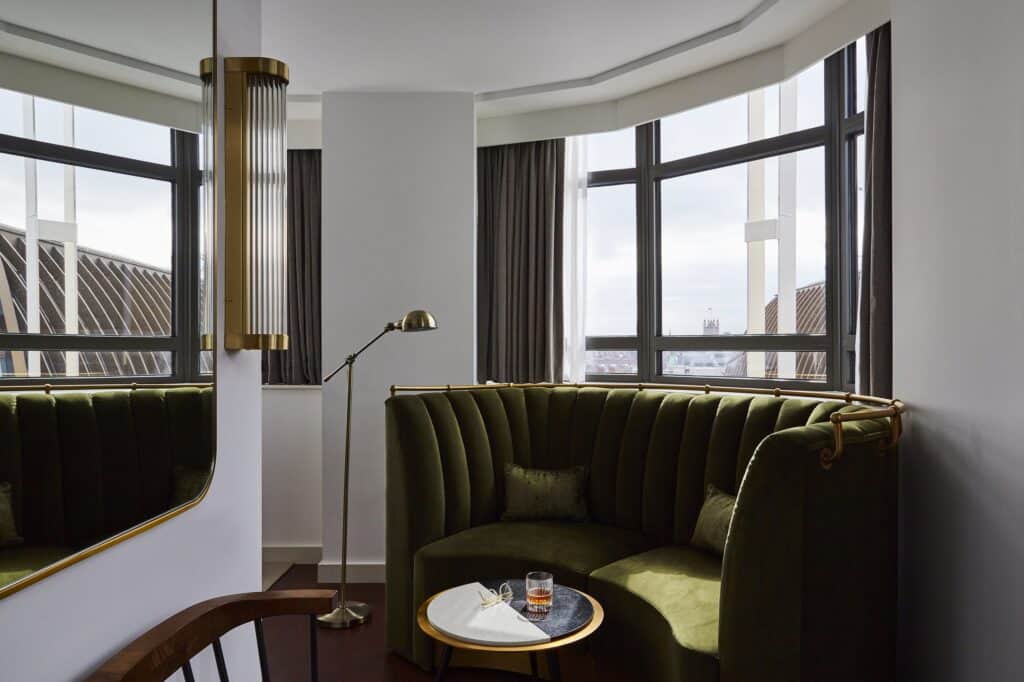How to win the London hotel boom

London’s hotel scene is thriving, with over 930 hotels and a rapidly growing number of luxury accommodations. By 2025, the city is expected to surpass Las Vegas in hotel room numbers, becoming the leading destination outside China. This expansion is driven by London’s status as a premier global destination, attracting over 21 million international visitors in 2023, according to VisitBritain.
Tourists are drawn to London’s unique blend of history and modernity, with over 70% highlighting its historic sites and cultural attractions, such as the British Museum and the Tower of London, as key reasons for their visit (VisitBritain). Despite economic fluctuations, the city’s rich heritage and vibrant arts scene continue to captivate travellers. To stand out in this competitive market, the hotel sector must move beyond traditional offerings and craft meaningful experiences that resonate with guests.
Post-pandemic, London’s visitor landscape has shifted significantly. The city saw a 15% increase in visitors from emerging markets like India and China in 2023 (VisitBritain), alongside a robust recovery in European tourism. Domestic travel has also risen, with an 8% increase in trips, reflecting a strong interest in local dining and events (Office for National Statistics). Demographics reveal a youthful surge in visitors aged 18-34 and a resurgence in family travel during peak seasons. Leisure remains the main attraction, but business travel is recovering with more international conferences. In today’s digital age, 80% of travellers use OTAs for bookings, with social media and search engines playing a crucial role in their decision-making (Trends Global Survey).
With visitor numbers approaching pre-pandemic levels, the challenge is clear: how can your property stand out? In this guide, we explore key strategies and insights to help you succeed in this evolving and competitive landscape.
OUTSMARTING OTAs
Despite what OTAs would have us believe, they can be outsmarted. Achieving long-term success, however, requires a comprehensive, well-connected strategy. A winning approach must seamlessly integrate SEO, PR, PPC, and content creation.
To boost direct bookings, hotels need to understand the online travel landscape and the behaviours that drive decisions. In 2023, OTAs remained the top choice for 80% of travellers, closely followed by search engines, social media, and other platforms (Trends Global Survey). With travellers spending over five hours consuming online content and 75% influenced by social media, it’s clear that booking decisions are shaped by multiple digital touch points.
To boost profitability in the competitive London hotel market, hoteliers should focus on optimising their website for seamless direct bookings, incentivising guests with exclusive offers, and leveraging tools like Google Hotel Ads. Enhance guest experiences to encourage repeat visits, strategically manage OTAs to maintain visibility, and foster strong guest relationships. Additionally, employing dynamic pricing, can engage in effective email marketing, and utilise social media to build brand awareness. Collaborating with local businesses and launching targeted PR campaigns can further elevate your hotel’s presence and drive more direct traffic.

The Rise of Neighbourhood Hotels: Creating Authentic Experiences
The rise of neighbourhood hotels and a preference for local experiences are key trends shaping the hospitality industry. Guests today are increasingly seeking authentic, immersive stays that connect them with the local culture. This shift is partly driven by a growing desire for experiential travel, where travellers prioritise unique and memorable experiences over traditional hotel stays.
Neighbourhood hotels, often smaller and independently operated, are ideally positioned to meet this growing demand. As global hotel groups expand their portfolios with diverse brands, delivering authentic guest experiences and crafting compelling brand narratives have become more important than ever. These efforts are key to avoiding homogenisation, encouraging differentiation, and giving guests a clear reason to book.
To achieve this, even large hotel groups should think small and operate with the mindset of an independent. Offering a personalised experience rooted in the local community—highlighting its culture, cuisine, and traditions—can create a deeper connection with guests. This approach reflects the increasing popularity of accommodations that emphasise authenticity and local engagement, which travellers now prioritise.
Hotels can enhance neighbourhood experiences by:
Partnering Locally: With 70% of travellers expressing an interest in engaging with local culture during their stay (Booking.com), hotels should be collaborating with local businesses to offer authentic experiences.
Localised Design: A study by the Global Wellness Institute found that 53% of travellers seek immersive cultural experiences, making localised design a significant draw. By incorporating local materials and art into the hotel décor to reflect the area’s culture, hotels can tap into this trend and also provide meaningful content for PR and social media.
Curated Experiences: According to Skift, 58% of travellers prefer custom experiences tailored to their interests, emphasising the importance of personalised services. By offering personalised itineraries and hidden gem recommendations, hotels can elevate their concierge services, creating unforgettable experiences for guests. This thoughtful approach not only enhances the stay but also fosters lasting memories, encouraging guests to return time and again.
Sustainability: A survey by Booking.com indicates that 83% of global travellers think sustainable travel is vital, highlighting the importance of eco-friendly initiatives. By sourcing products locally and adopting eco-friendly practices, hotels can connect with guests and the community on a deeper level, demonstrating a commitment to sustainability.
Strategic Market Targeting: Maximising International and Domestic Appeal
Maximising International and Domestic Appeal: With the influx of new five-star hotels, it’s crucial to target the right international markets strategically. This requires a data-driven approach, considering factors like flight connectivity, economic trends, and cultural affinity. According to VisitBritain, London saw a 15% increase in visitors from emerging markets like India and China in 2023, making these regions key targets for strategic marketing.
Meanwhile, domestically, hotels should appeal to local markets through exclusive dining experiences and unique in-house events that position the hotel as a community hub. In 2023, domestic trips to London increased by 8% compared to the previous year, according to the Office for National Statistics, highlighting the growing importance of catering to local travellers and enhancing their experiences.
Balancing Innovation with Tradition: Capitalising on London’s Enduring Cultural Draw
Despite the surge in new hotels, London’s core appeal continues to lie in its rich cultural and historical heritage. To stand out, hotels should differentiate themselves by offering unique perspectives on the city’s timeless tourist attractions.
As Londoners, it’s easy to overlook how integral these iconic landmarks remain for international visitors. While there’s a natural drive among marketers to constantly innovate and evolve a hotel’s offering, it’s important to recognise that many guests are drawn to the classics. According to VisitBritain’s annual survey, released in July 2024, London’s attraction sector saw an 80% growth in international visitors compared to 2022, underscoring the enduring pull of cultural landmarks.
The data speaks for itself: The Tower of London was the most visited paid attraction in 2023, welcoming 2.8 million visitors—a 38% increase from 2021. Similarly, the British Museum topped the charts as the most visited free attraction, attracting 5.8 million visitors in 2023, up 42% from 2022. These statistics confirm that while innovation is important, hotels should not overlook the timeless appeal of London’s historic and cultural icons when crafting their guest experiences.
Key Takeaways:
- Don’t give in to OTAs – they can be outsmarted.
- Think small! Embrace the trend of neighbourhood hotels by providing immersive and authentic local experiences.
- Personalise services to enhance guest satisfaction and encourage repeat visits.
- Target emerging international markets and cater to the increasing number of domestic travellers.
- The original cultural tourist attractions are still key for international travellers, so explore packages and tours that include these destinations within them.



